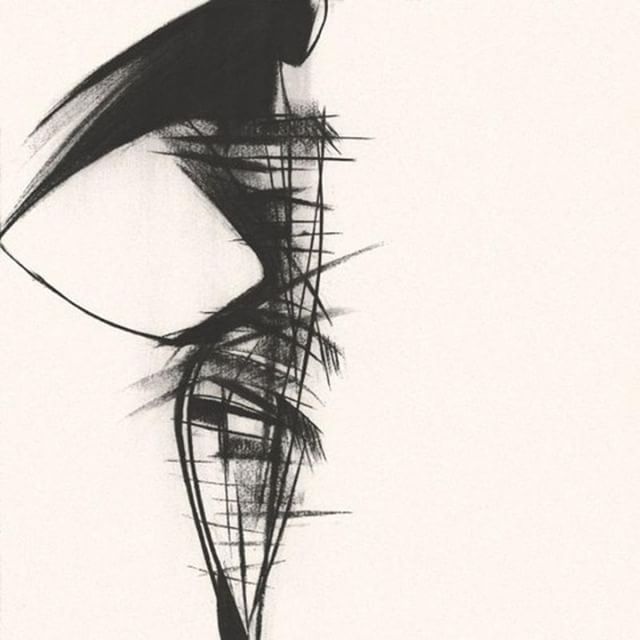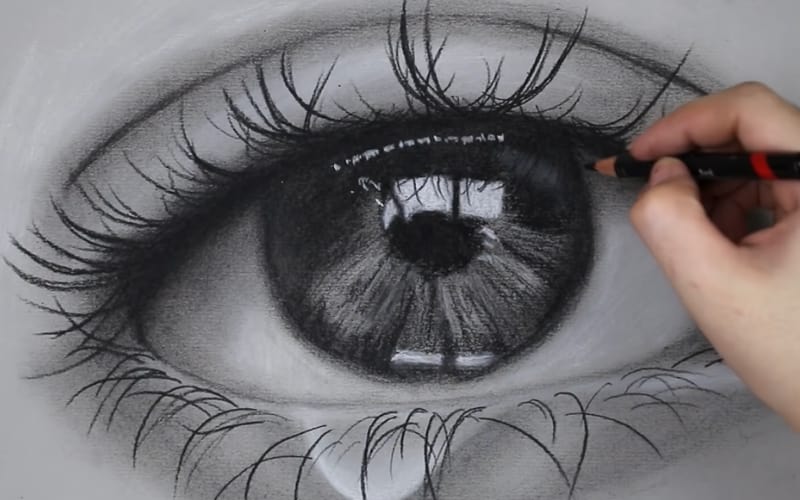Abstract charcoal drawing offers an expansive avenue for self-expression, blending intuition and technique to create impactful art. This medium, characterized by its rich blacks and versatile shades, can intimidate beginners with its seemingly complex methods. However, the process can be simplified and made approachable without diminishing the ability to impress. In this journey through abstract charcoal drawing, we’ll explore foundational techniques, creative exploration, tool selection, and finishing touches that transform simple ideas into captivating artworks.
Grasping the Basics of Charcoal
Selecting the Right Tools
The choice of materials significantly affects the outcome of your abstract art. Start with a selection of charcoal forms: vine charcoal for soft, lighter shades, and compressed charcoal for intense, dark lines. Incorporating charcoal pencils can add precision to your drawings, ideal for detailing. Equally important is the choice of paper; a heavyweight, textured paper will hold charcoal better and enhance the depth of your artwork.
Mastering Charcoal Techniques
To harness charcoal’s full expressive potential, familiarize yourself with basic techniques like smudging, erasing for highlights, and layering. Smudging helps in creating soft shadows and gradients, introducing a sense of movement or atmosphere. Using a kneaded eraser not only fixes mistakes but also brings out highlights, adding dimension. Layering various charcoal intensities can gradually build up the scene, allowing for a more controlled composition and texture evolution.

Embracing Creative Exploration
Finding Inspiration
Inspiration for abstract art can come from anywhere—emotions, music, the natural world, or even the urban environment. Begin with an open mind and sketch freely, not aiming for perfection but rather exploration. These initial sketches can be purely experimental, combining shapes, lines, and textures at whim. This phase is about letting your intuition guide your hand, fostering a direct connection between your inner world and the charcoal piece.
Developing Your Unique Style
As you continue to experiment, you’ll start noticing patterns or themes that resonate with your artistic voice. Lean into these discoveries, as they represent the budding of your unique style. Try to push these concepts further with each new piece, challenging yourself with different compositions or scales. Embracing your distinctive approach doesn’t mean shunning traditional techniques but rather incorporating them in a way that complements your expressive aims.

Enhancing Drawings with Tools and Techniques
Exploring Beyond Charcoal
Incorporating additional tools and mediums can elevate your abstract charcoal drawings. Using a white charcoal pencil or pastel introduces a contrasting element, making your artwork pop. For more texture, consider adding elements like sand or using unconventional tools like feathers, sticks, or even your fingers to apply and manipulate the charcoal. Each of these choices opens new avenues for creative expression within your work.
The Role of Fixatives
Once satisfied with your abstract drawing, applying a fixative spray is crucial. It prevents smudging and preserves the quality of the piece over time. For abstract works, a matte finish often works best as it doesn’t alter the innate texture and tones of the charcoal. However, experimenting with different finishes can also yield interesting results, adding another layer of depth to your abstract creations.

Presenting and Sharing Your Work
Choosing the Right Frame
Framing serves not just to protect your artwork but also to enhance its visual impact. For abstract charcoal drawings, consider simple, sleek frames that don’t detract from the work itself. A floating frame, where the artwork is sandwiched between two panes of glass, can be particularly striking, as it emphasizes the contrast and depth of the charcoal without visual interruption.
Sharing and Receiving Feedback
Presenting your work to an audience, whether through galleries, online platforms, or social media, is a brave step that can reward you with valuable feedback. Constructive criticism can fuel your growth as an artist, encouraging you to refine your techniques and push your creative boundaries. Moreover, seeing how different people interpret your abstract pieces can offer fresh perspectives and inspiration for future works.

Fine-Tuning the Artistic Process
Experimenting with Light and Shadow
One of the most captivating aspects of charcoal drawing is the dramatic interplay between light and shadow. To master this, experiment with different lighting angles in your reference images or still life setups. Observe carefully how light falls on various surfaces and aim to replicate those effects with your charcoal. Use erasers to extract highlights from dark areas and soft willow charcoal to deepen the shadows. This attention to tonal contrast is what can turn a simple abstract sketch into an eye-catching masterpiece with the illusion of depth and volume.
Embracing the Happy Accidents
In the realm of abstract art, so-called mistakes can transform into unexpected triumphs. Smudges, overly dark patches, or unintended marks can evolve into part of the artwork’s fabric, giving it character and spontaneity. Embrace these moments, adapting your drawing organically instead of trying to force it back to the original plan. Often it’s these unplanned elements that resonate most with viewers, as they add a raw, authentic quality that can’t be preconceived.

Continuous Learning and Adaptation
The journey in abstract charcoal drawing entails continuous learning. Challenge yourself by setting projects or goals, such as creating a series around a particular theme or emotion. Attend workshops, watch tutorials, or study the works of artists you admire. Each new technique or perspective enriches your artistic vocabulary, allowing you to approach your abstract creations with an expanded toolkit. As you evolve and adapt, your work becomes a richer and more complex reflection of your artistic voice.
Creating a Cohesive Collection
Building a Themed Series
An impactful way to advance your abstract charcoal work is by creating a series of drawings around a central theme. It could be an exploration of a particular form, color (charcoal intensity), emotional expression, or a response to a piece of music. A cohesive collection can both challenge your creative limits and provide a narrative framework for your audience to engage with your art on a deeper level. Each piece within the series speaks to the others, offering a multifaceted interpretation that invites viewers to contemplate the underlying message.
Reflecting and Evolving Your Art
With every abstract drawing you complete, take time to reflect on what the process and the outcome taught you. Analyze which elements you find most effective and identify areas for improvement. This self-critique is a powerfully quiet moment where you can align your internal vision with the manifested work. Approach each new drawing with these insights, allowing your evolving experience to infuse your work with greater sophistication and depth.
Unlocking the potential of abstract charcoal drawing does not require complex skills but a willingness to explore and experiment. Through understanding the medium’s basics, embracing personal expression, utilizing various tools and techniques, and thoughtfully presenting your work, you can create abstract charcoal drawings that truly impress. Each piece is a stepping stone in your artistic journey, reflecting your growth and unique voice amidst the broad spectrum of abstract art.